With DSLRs in their hands, the new generation of an ancient Indian tribe begins to break its bow-and-arrow stereotype
In the heart of eastern India, teenagers of the Santhal tribe begin to chronicle stories of their ancient cultural heritage using modern tools – DSLR cameras and the Internet.

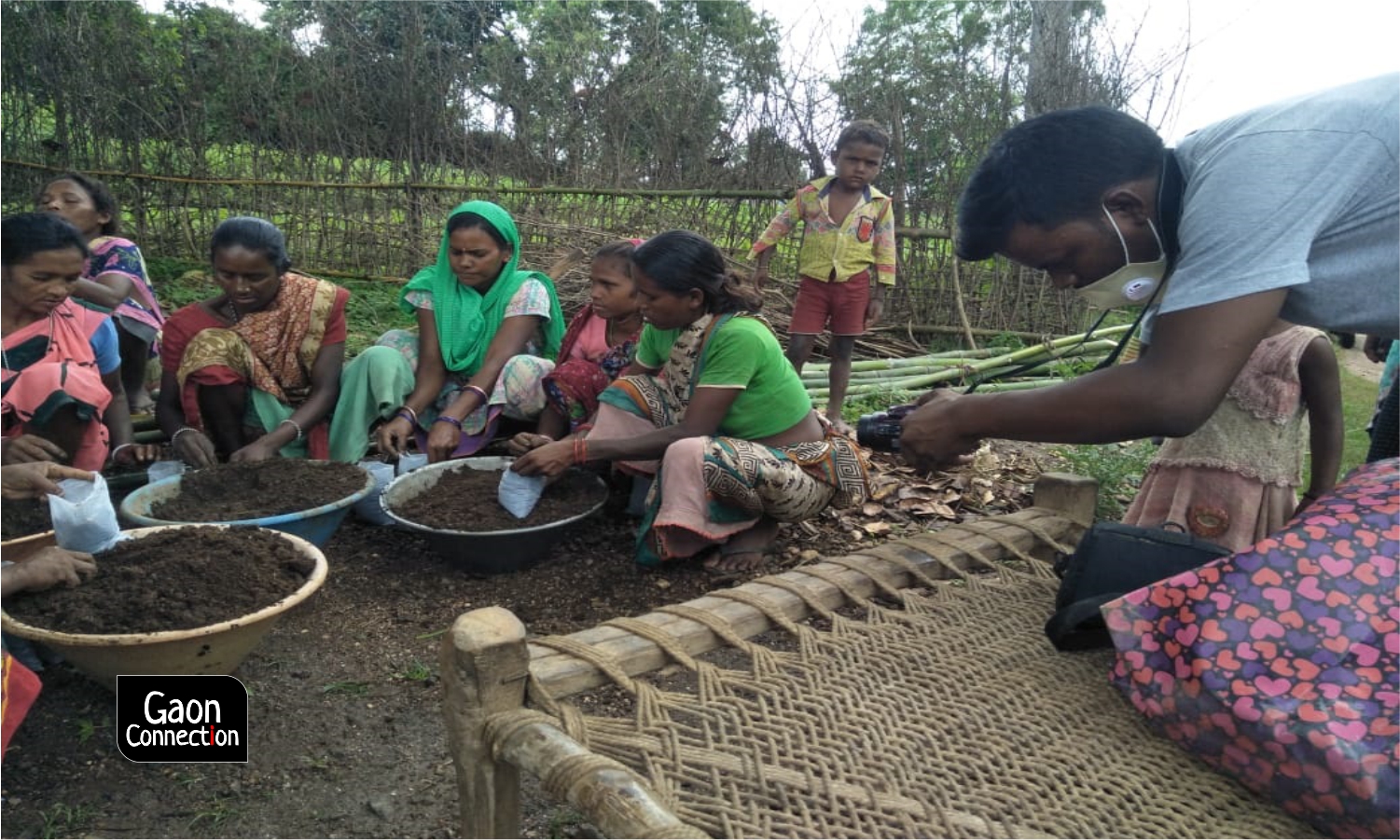
A Lahanti Club member shooting for a short film. Photo in arrangement with Lahanti Club and PRADAN
Not far from his village home, Simon Baskey treaded carefully through the dense forest — tall trees with big leaves that had stayed dry throughout the year — and exploded into greens during the monsoons. In distance, was what he was looking for. He took an aim – and shot.
White mushrooms.
Baskey, belongs to the Santhal tribe, one of India’s oldest and largest tribal communities, living across in Jharkhand, Bihar, West Bengal, Orissa, and Assam. In Jamui in southern Bihar, young men and women from the community are breaking their bow-and-arrow stereotypes and chronicling the stories of their community, using cameras and the Internet.
The youth call themselves The Lahanti Club. In the Santhali language, Lahanti means `to move forward’. The Lahanti Club was formed in 2017 to help children of the centuries-old Santhal community learn their own language and take pride in their culture.
“There are many green vegetables in the forest and we carefully preserve their names in folders. Our community has been eating forest foods for ages,” Sonalal Marandi, who lives in the Govindpur village and is another member of the club, told Gaon Connection in a video interview. “If we do not make such videos, one day our children will forget our rich food tradition. In monsoon, we collect different varieties of mushrooms,” he said.
One of their earliest videos, titled ‘Aspiration’ was uploaded a year ago to their YouTube channel called ‘Lahanti Club’. It begins with text saying “A for Aspirations”, and captures some kids of the Santhali tribe, in a remote village in Bihar, in tight frames, talking about the profession they want to take up in the future.
In the video, two girls could be seen saying they hope to become teachers, one boy saying he aspires to become a doctor and another one saying he’d become a policeman.
The video, shot with a steady hand and with music running in the background, is one of the 41 videos uploaded to the Lahanti Club YouTube channel, and the subjects range from local culture to sustainable forest foods.
“I joined Lahanti Club this January. It feels great to be a part of it. I have completed four films till now and am still working on a few others. We all go to the forest for shooting forest foods,” Baskey, who uses a Nikon DSLR camera, told Gaon Connection.
He often shoots in the village forest, with its fresh, green foliage, only a kilometre away from his house and offering a spectacular view in the monsoons. As this reporter interviewed him from New Delhi, he quickly sent a photo of a white mushroom found in the forest in the middle of the chat.
The white mushroom is called badra uhh in the Santhali language.
“My community members used to eat all kinds of forest foods but, now they buy more from the local markets,” Baskey pointed out.
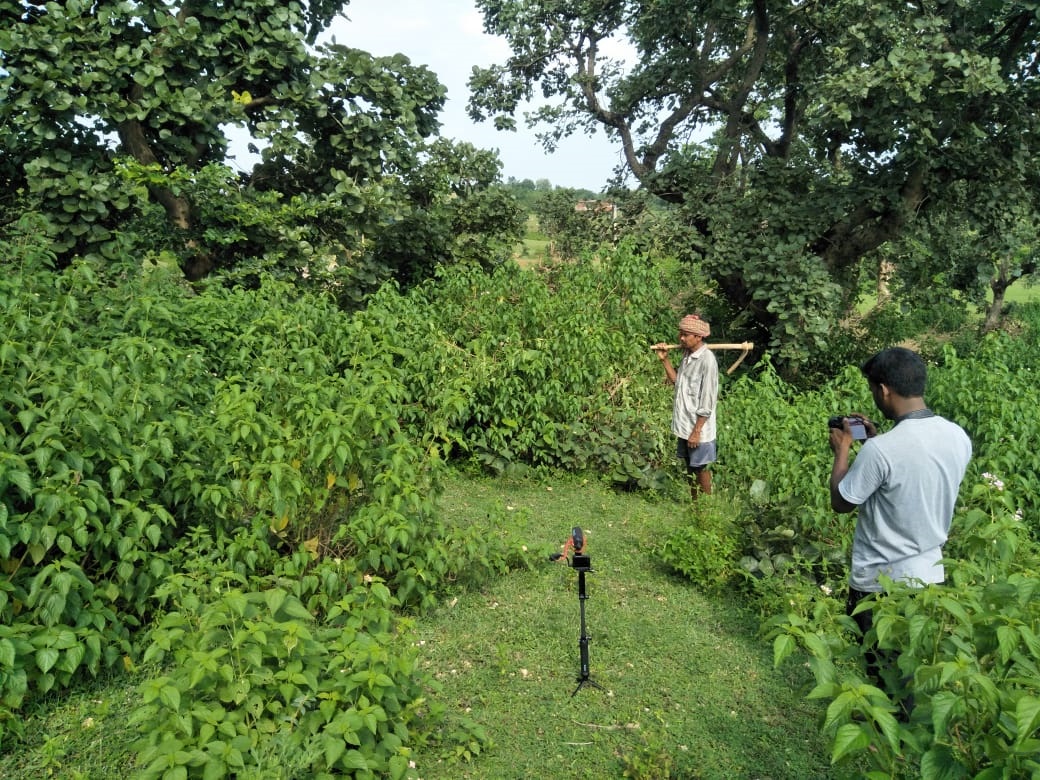
Inside the forest, he focused his attention on a man from his village plucking leaves. In his community, leaves are often used to make katori (bowls), Baskey told us.
Baskey loves shooting short films on wild foods found in the forest. Other members of the Lahanti club join him in this endeavour.
Monsoon is the perfect time to find edible wild mushrooms. Suman Hansda, a resident of Binjha village, a club member who joined last year, said two people work together during a shoot. While one searches for mushrooms or any other forest food, the other films. The forest is some five kilometres from his house.
All these short films are part of the CHIRAG project, an initiative undertaken by PRADAN, the University of East Anglia based in the United Kingdom, and two other organisations, to address food and nutrition security as well as to generate knowledge on local foods. It was started in 2019. One such interesting film is on bade billi or the fruit of the banyan tree.
Formation of the Lahanti Club
When Gautam Bisht, the founder of Sinchan Education and Rural Entrepreneurship, a non-profit based in Chakai in Bihar’s Jamui district, visited the block for a research project, he noticed how educated Santhals looked down upon their illiterate community members. Bisht also found it was difficult for Santhals to represent their educational and cultural aspirations.
After finishing his project, in 2017, Bisht started Sinchan and the Lahanti Club to involve local youngsters, who would then act as a bridge between the younger and older generations. “My focus was to work with youths on culture, education, and local rural livelihood,” Bisht told Gaon Connection.
There are some 27 members now. Seven are board members who formed the club in 2017. At present, the members are engaged in diverse activities. Filming sustainable traditional food relished in the Santhal community is one of them.
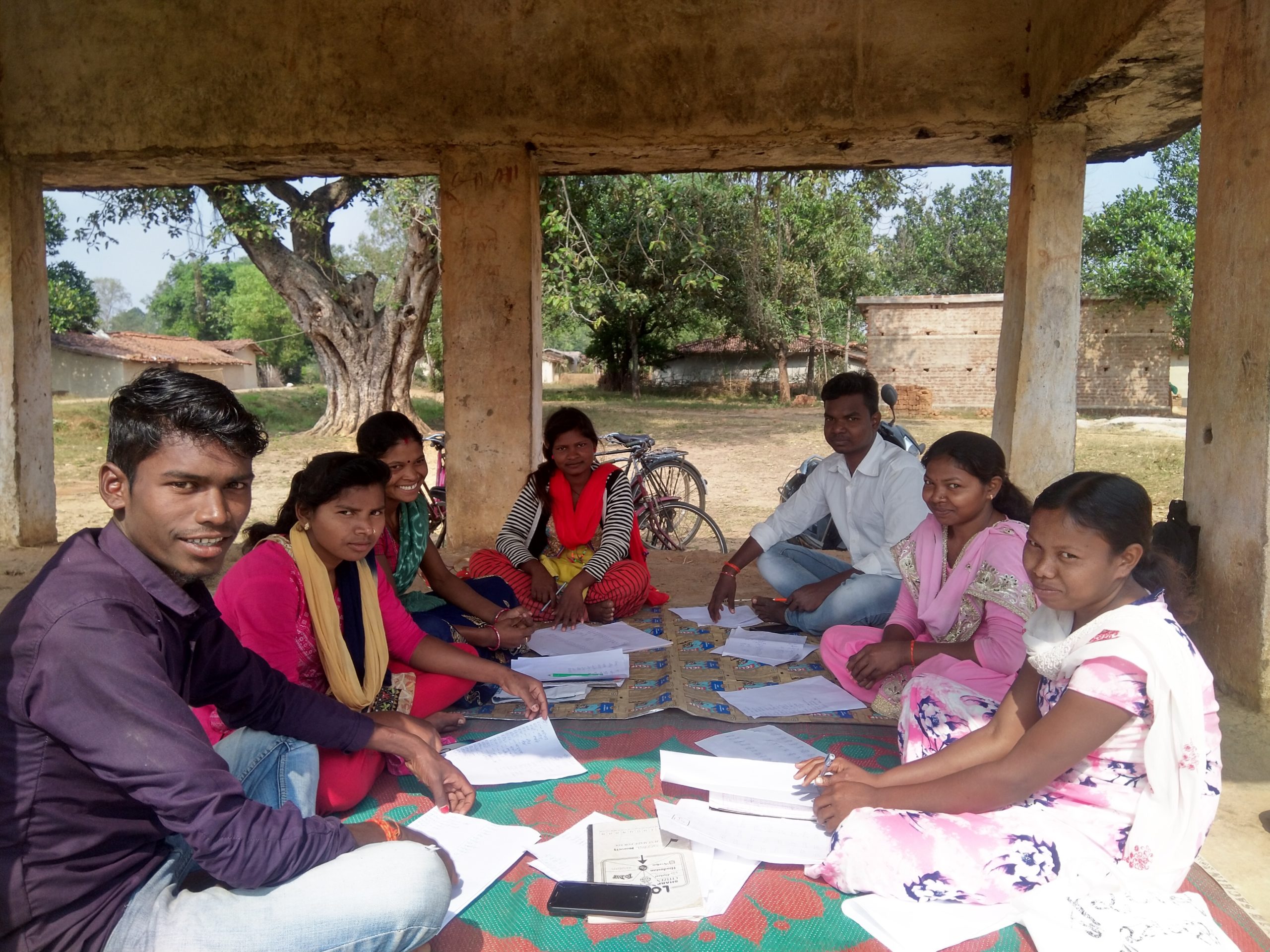
“Shooting films on wild forest foods gives the Santhal community contextual knowledge and helps them develop a sense of pride in their traditional culture,” said Shuvajit Chakraborty, an executive with non-profit PRADAN (Professional Assistance for Development Action).
Training club members to make films
“Initially we planned to invite people from outside to shoot films with these youngsters giving interviews. But, that was not a good plan for long-term capacity building,” Bisht said. “So we handed over cameras to the members and trained them,” he added.
Baskey, Hansda and other club members attended a training session in Deoghar, Jharkhand, last year to learn how to use professional cameras for film making.
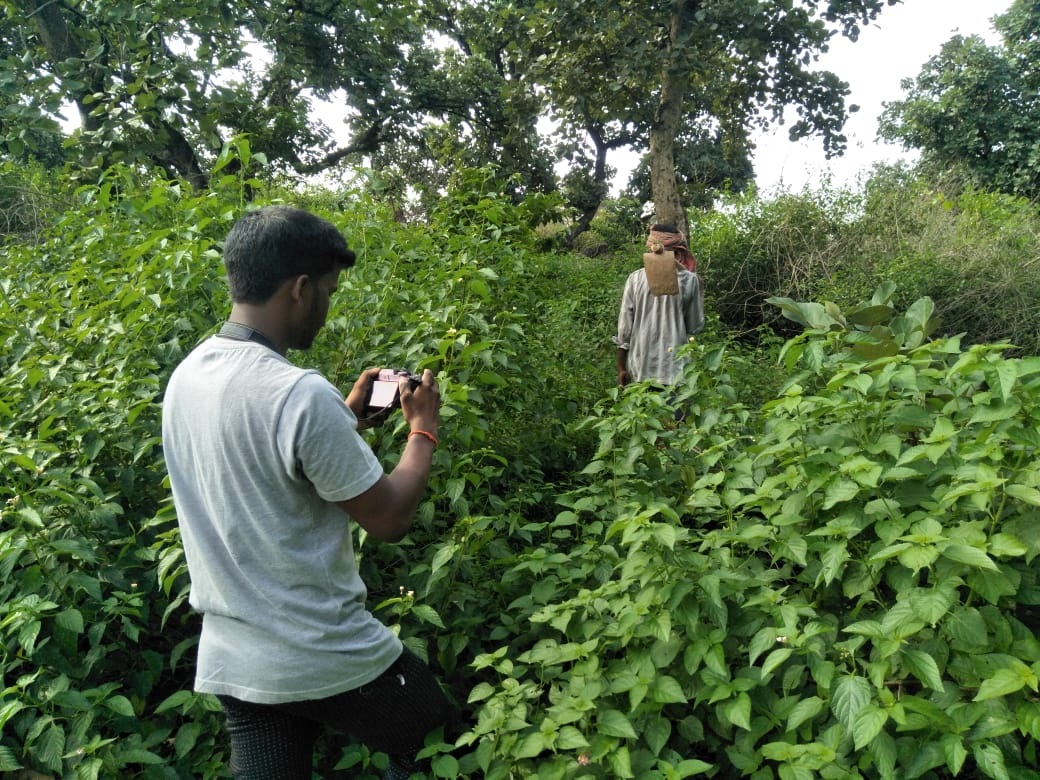
Sonalal had missed this training since he was unwell. But that did not deter him. “Before joining the club, I used to click a lot of photos with my mobile phone. I knew how to shoot and look for perfect angles. Now, I have learned a bit on my own with the camera as well,” he told Gaon Connection.
There is a separate team to edit the videos. Tech-savvy members of the club, however, have learned quite a lot. Marandi knows how to upload videos on Google Drive and send them via mail.
The club members share eight cameras among Bamda, Pojha, and Nawadih panchayats. “We get Rs 1,500 per film. These are four to five minutes long. We take a day or two to shoot a film,” Baskey said. PRADAN makes this payment.

Women wield cameras too
Kavita Marandi, also from Sonalal’s village, joined the club in 2018. “I have made a video on kekra (crabs) found in the fields, ghongha foraged from the fields (a type of edible snail), and one on singhara (water chestnut),” she told Gaon Connection.
As per Kavita, Santhals have been eating wild forest food and fruits when agriculture was not common in the community. “We were forced to learn cultivation because forests deteriorated and our foods vanished due to developmental activities,” she told Gaon Connection.
Kavita is happy to make short films on Santhali food culture. “I like listening to stories about forest food. My mother tells me about the advantages of eating different kinds of saag (greens). During the lockdown, we survived on forest food,” she said.
Pooja Hembram has been associated with the club for some seven months now. She also works as a pashu sakhi, a rural animal care service provider, and vaccinates goats and hens. “I did a video on Dumar ka sabzi or Lowa Billi (Ficus racemosa), a kind of fruit, called goolar in Hindi. It is eaten raw and also cooked as a vegetable. I shot it in March,” she told Gaon Connection.
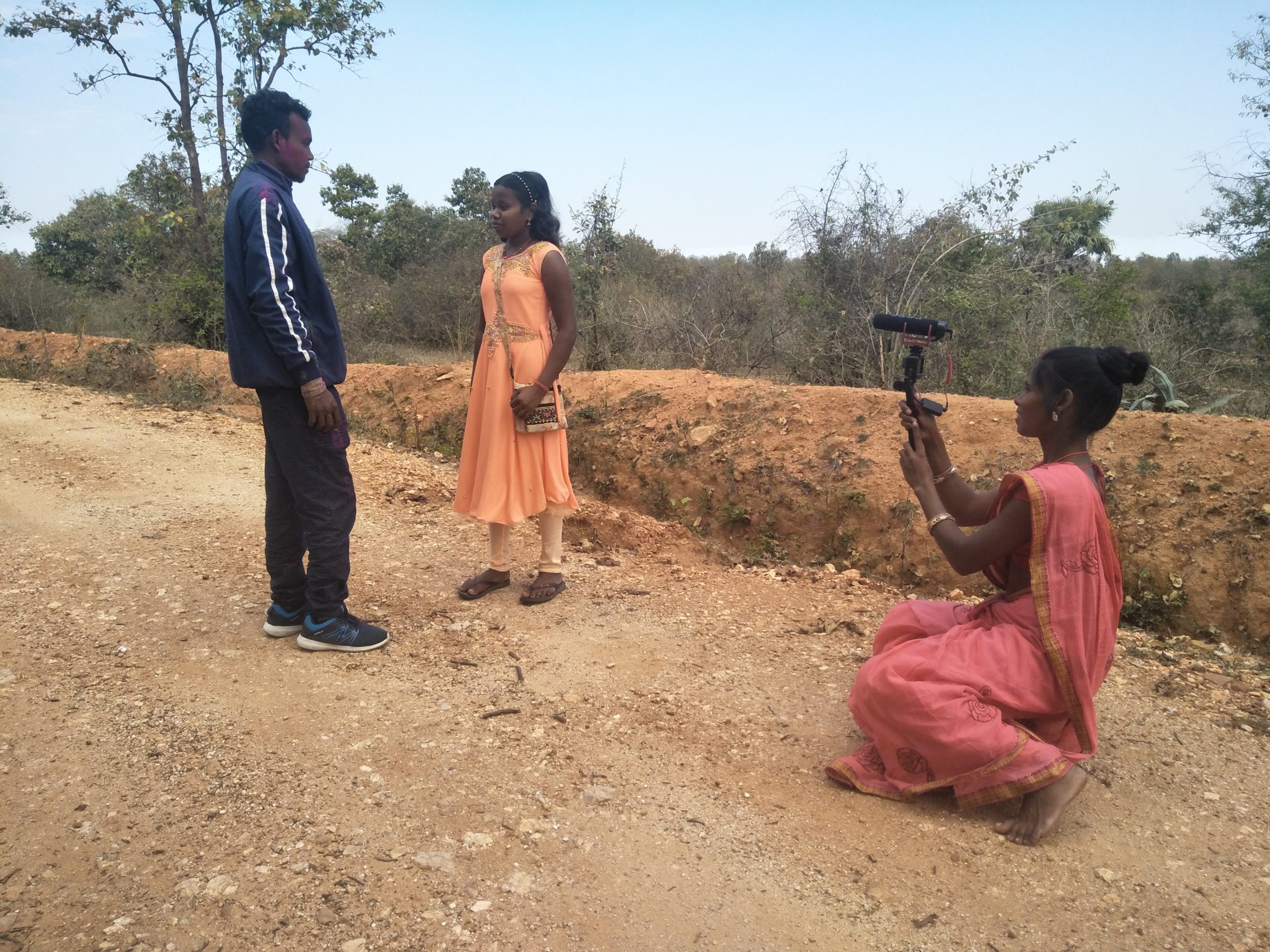
Kusum Hansda, who joined in December 2018, likes making films. “When I make such videos, I know many people would know me through them. I have graduated in home science from Chakai,” she said. “We showcase forest foods in our videos which are slowly vanishing. We want people to know that we get nutritious food from forests” she added.
Motilal Hansda from Ranadamga village of Bamda panchayat agreed with Kusum. “We bring before our audience forest foods not available in the market. Such videos will help us preserve our food culture forever,” she said. Meanwhile, Baskey sent photos of women getting ready for munga (drumstick) nursery.

